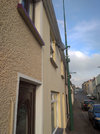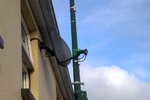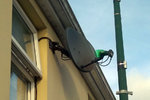Fisty McB
Member
- Joined
- Aug 11, 2012
- Messages
- 433
- Reaction score
- 630
- Points
- 93
- My Satellite Setup
- See my signature...
- My Location
- County Tyrone, N. Ireland
Snow is not usually a big problem here. Only maybe once or twice a winter on average though it can vary (2009/10 and 2010/11 were exceptions) with the main problem being snow accumulating on the support bar just in front of the LNB. Knocking this off usually restores reception unless there's large accumulations on the dish face after a blizzard. Nearly all snow here is of the "wet" variety, powered snow is rare here as it's normally not cold enough and too humid, even though I'm some 60km in from the sea.Subscribing to that. Tested by spraying a dry lnb = instant drop in levels.
Hood mandatory here for any marginal signal (28E). For strong sats it's only the seasonal matter of avoiding snow build-up.
Rain and wind are much more common year round. The latter the main culprit for knocking dishes out of alignment, but rain isn't usually a big problem for the Astra satellites at 28.2 and 19.2 east. Hot Bird is a bit weaker though - over the years I've seen quite a few "Cyfra+" dishes spring up locally and they appear to be quite small, equivalent of 60cm if not smaller. Not much margin for rain on those dishes here. My own measurements work out at 60-70cm being a minimum with 80cm required for reliable DVB-S2 8PSK reception from Hot Bird here. Might explain why excollier (who isn't far from myself) sees quite a few rain hoods on dishes aimed for reception of Eastern European channels.



